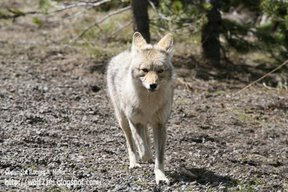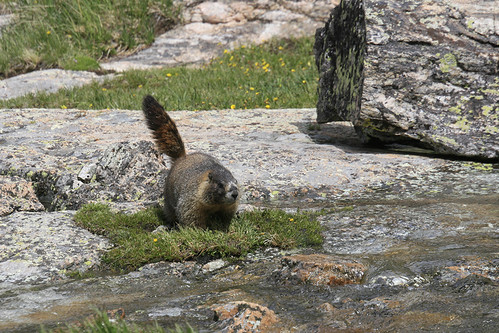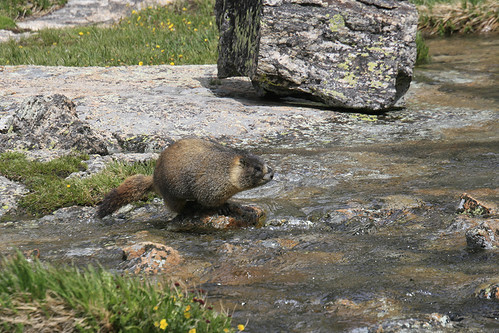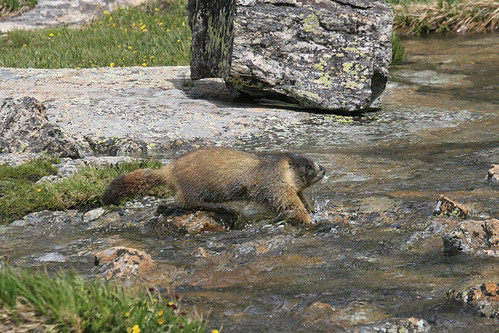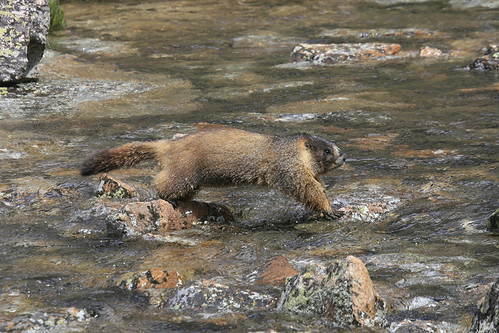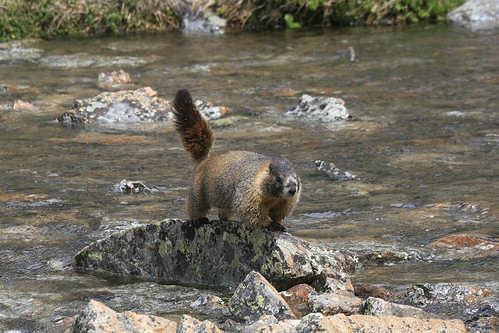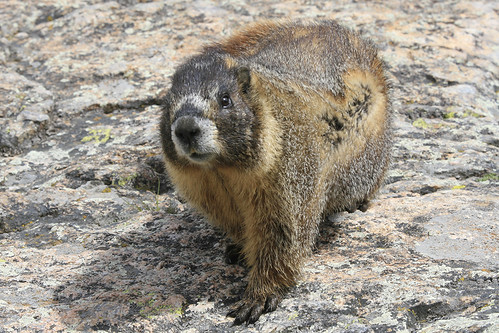When it comes to Kingdom Animalia, we’re not the only ones that can tap into the conversation!
Our study conducted this summer at the Rocky Mountain Biological Laboratory (RMBL) suggests Mule deer (Odocoileus hemionus) tune into marmot (Marmota flaviventris) alarm calls for hints of nearby predators.
Photo credit: Jenn Smith
Previous scientists noted that mule deer reacted to marmot alarm calls, and we saw this as an opportunity to study interspecific communication in animals of different size, vulnerability and defense mechanisms.
Interspecific communication, or eavesdropping, is when an individual of one species receives and responds to a signal from another species. What’s that information good for, anyhow? Well, if you’re a vulnerable animal foraging, intercepting a pertinent warning can help save your life! Eavesdropping is a useful tactic to learn and can change foraging and antipredator behavior, protection seeking, and group characteristics.
Deer and marmots live in similar areas, and coyotes and potentially mountain lions prey upon both. Therefore, we hypothesized deer would respond to marmot alarm calls versus a common bird song. To test this hypothesis, we conducted a playback experiment.
We recorded mule deer behavior in response to either the song of the mountain white-crowned sparrows (Zonotrichia leucophrys; control), or a marmot alarm call. This was your typical field biology research: wake up before dawn, strap a speaker to your backpack, and head out to track deer, microcassette in hand. Of course, finding deer was usually easier said than done. I quietly recorded the deer behavior 30 seconds prior to and after the sound was played using a prewritten ethogram with typical deer behavior. That information was then analyzed in JWatcher for patterns.
Hiding in veratrum on the search for unsuspecting deer
Turns out for the marmots at RMBL, the marmoteers aren’t the only ones listening in. We found that deer near human settlements had a significantly different response to marmot calls than sparrow songs. Any individuals who heard the call typically became alert and stayed vigilant longer; whereas, those who heard the control were more likely to look and then continue foraging. Deer far from people showed similar responses to marmot calls and sparrow songs probably because they aren’t habituated to a person being around.
Our results are interesting and unique because we have evidence for eavesdropping in animals that are very different in size and vulnerability. These deer have found a potentially reliable source of information through marmots and can use that to either take off into the woods or allocate more time foraging.
There is a lot more work to be done in this field! Future studies can use a remote speaker and camera to study how deer farther away from human settlements react to calls, or how they react to the alarm call of a sympatric species that doesn’t share a predator with them. Perhaps even a study looking at fitness could be useful to know how beneficial eavesdropping is for individuals and populations. The list could go on…
If you’d like to get a more detailed review of this paper, take a look at a copy here.












